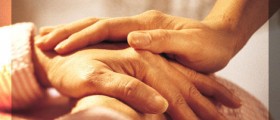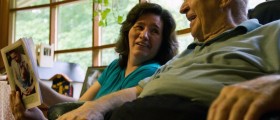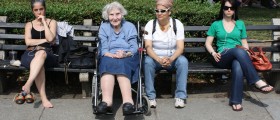
There are millions of people in the US who take care of their older relatives, usually without being paid for it. This is a stressful and demanding job which can usually take the best out of people and trigger health problems.
A typical caregiver, judging by studies and statistical data, is a woman in her 40s, with at least a bit of college experience, spending about 20 or more hours a week taking care of a person older than 50. Of course, all the information here can vary, but in the majority of cases, this is the common scenario.
Profile of Caregivers in the US
Most caregivers in the US are married, balancing their normal work with their personal lives and their caretaking obligations.
All caregivers, including those in the US, are exposed to this unique burden of their “profession”, depending on the amount of time. Also, the number and type of activities related to caring about a person are an important aspect here as well. Therefore, the more obligations a caregiver has, and the more time he/she needs to invest into taking care of a person, the stronger the impact on his/her health is.
Namely, some caregivers dedicate less than an hour a week for their obligations related to the other person. On the other hand, some people spend more than 40 hours working as caregivers. Thus, the situation is not the same for all caregivers, nor is the impact this job has on their lives and health.
So, a profile of a caregiver can be classified on levels, the first one meaning that a caregiver spends a relatively small amount of time taking care of a person, being involved in no activities of daily life of this person. Level 5, on the other hand, would specify a person who spends more than 9 hours of his/her time per week with the person he/she takes care of, being involved in 5.9 instrumental activities of daily living and 4.2 activities of daily living.
Sex of Caregivers
Moving on to the sex of caregivers, most caregivers are females, even though there are a lot of men who are involved in this kind of work. Yet, women are more likely to provide the highest level of caregiving, being exposed to the greatest burden of this activity. Namely, 71% of female caregivers are exposed to level 5 of burden while only 58% are indulging into level 1 type of this demanding work.
As far as male caregivers are concerned, they are usually of Asian origin, in 54% of cases the surveys have shown. Furthermore, 38% of male caregivers are white, 33% African American and 41% Hispanic.
When we take the whole male and female population in the US into consideration, 61% of caregivers are female while only 39% of caregivers are male.
Age of Caregivers
When talking about the age of caregivers, about 26% of caregivers are 18 to 34 years old. On the other hand, people between 35 and 49 years of age make up for 32% of the whole caregiving population in the US. Furthermore, 30% of caregivers are between 50 and 64 years old and only 13% of caregivers are older than 65.
Interestingly, younger caregivers are likely to belong to minorities, as far as ethnic groups are concerned. Basically, 35% of African American caregivers are 18 to 34 years old, while the percentage of white people in this case is 22%, the Hispanic 33% and Asian 38%.
However, younger caregivers usually take care of younger people. At the same time, older individuals are likely to provide care to people older than 50.Education of Caregivers
As for education, caregiving is not specific. Rather, people with all sorts of educational backgrounds are equally involved in caregiving. Nevertheless, small differences do exist, since 35% of caregivers have finished college, 30% have experienced some college while 29% have only completed high school.
Yet, the oldest group of caregivers, along with the youngest group, both said that their education stopped at high school. Also, those who have only finished their high school are more likely to dedicate more time to caregiving. In fact, these people dedicate 21 or more hours to caregiving than other age and education groups involved in this line of work. Moreover, younger caregivers are commonly located in rural environments than urban or suburban ones.
All in all, being a caregiver is a demanding job, the characteristics of which depend greatly on numerous factors, among which are age, sex and education. Namely, people with average or low education levels are more likely to be caretakers, especially if they are of female sex and average age. Of course, there are other scenarios as well.
One thing is for sure, being a caretaker is a relative notion, depending on the dedication, sacrifice and way of conduct of every single individual involved in this kind of work. It can be rewarding, but it can also be discouraging and overwhelmingly demanding.

















Your thoughts on this
Loading...